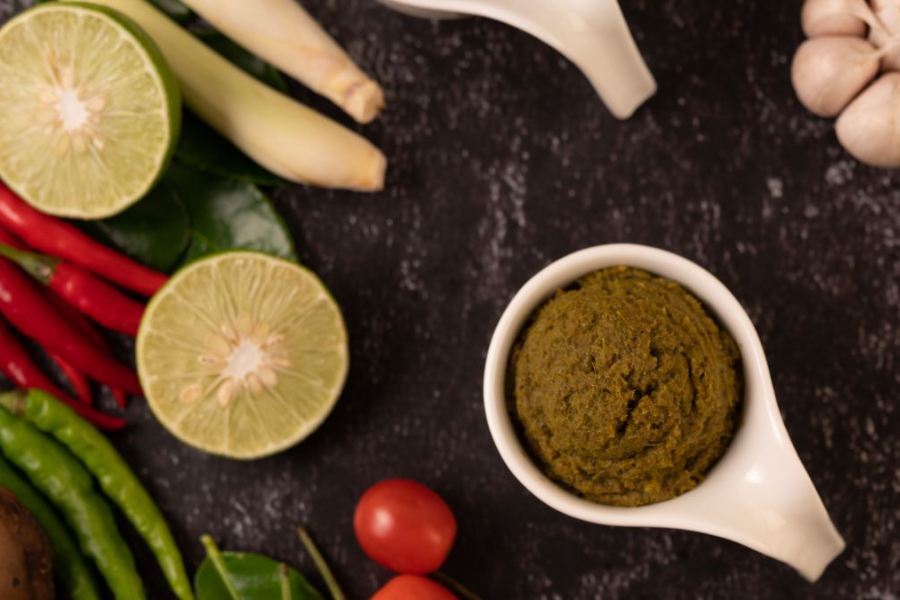Sauer Condiment NYT: Exploring Popular Clues and Their Origins
Introduction
Solving crossword puzzles can be both thrilling and intellectually stimulating. A fascinating element of this experience is encountering clues related to Sauer condiments. These tangy and zesty ingredients often make their way into puzzles, adding a flavorful twist to your solving journey. This article delves into the common Sauer condiments featured in crossword puzzles, explores their origins, and provides tips on how to identify them.
What Does “Sauer” Mean in the NYT Crossword?
In the realm of crossword puzzles, the term “Sauer” often refers to a specific type of condiment that might not be immediately familiar to all solvers. Crossword clues are typically concise and can involve wordplay or creative thinking. When you come across the clue “Sauer condiment,” the word “Sauer” is used to describe a particular kind of condiment.
Decoding Sauer Condiment NYT Crossword Clues
To excel in solving Sauer condiment clues in the NYT Crossword, it helps to understand what these condiments are. Sauer condiments are known for their tangy, sharp, or sour flavors, which enhance a variety of dishes. Common examples include vinegar, mustard, pickles, and sauerkraut. These ingredients have deep historical roots and play significant roles in many cuisines around the world. Their distinctive tastes and properties make them popular choices for crossword clues. By familiarizing yourself with their cultural and historical contexts, you can improve your puzzle-solving skills and enjoy the process even more.
Popular Sauer Condiments in NYT Crossword Clues
Several Sauer condiments frequently appear in crossword puzzles, and knowing these can give you an advantage.
- Mustard is a common clue, often appearing as “yellow condiment” or “hot dog topper.” With its sharp and tangy flavor, mustard is a staple in many dishes and frequently features in crosswords.
- Vinegar is another frequent entry, often clued as “salad dressing ingredient” or “sour liquid.” Its versatility and distinctive taste make vinegar a popular choice for crossword puzzles.
- Pickles also make regular appearances. Clues like “brined cucumber” or “sandwich addition” are often used to refer to pickles. Their tangy flavor and crunchy texture make them a delightful addition to various foods.
- Sauerkraut might not be as common but remains a noteworthy Sauer condiment. Clues such as “fermented cabbage” or “Reuben sandwich topping” usually point to sauerkraut. Its unique flavor and cultural significance make it an intriguing crossword clue.
Understanding the Fermentation Process
The charm of Sauer condiments lies in their fermentation process. Typically, vegetables like cabbage are mixed with salt and left to ferment over several weeks. During this period, beneficial bacteria convert sugars into lactic acid, giving the ingredients their distinctive tangy flavor. This process not only preserves the vegetables but also enhances their nutritional value, making them rich in probiotics and vitamins.
For those interested in home fermentation, fermentation crocks are available on Amazon, providing an easy setup for making your own Sauer condiments.
Health Benefits of Sauer Condiments
Sauer condiments offer more than just culinary appeal—they come with a range of health benefits. The probiotics produced during fermentation support gut health and boost the immune system. Additionally, these condiments are packed with vitamins and antioxidants, contributing to overall wellness and potentially reducing the risk of chronic diseases.
If you’re looking to enhance your gut health further, consider exploring probiotic supplements available on Amazon.
Culinary Versatility and Global Appeal
From German sauerkraut to Korean kimchi and Eastern European pickles, Sauer condiments have a global presence with diverse flavors and uses. Each culture puts its unique spin on fermentation, using local ingredients and spices to create distinct culinary experiences. This variety not only enriches dishes but also reflects the cultural heritage and traditions of different regions.
Sauer Condiment NYT in Crossword Puzzles
For crossword enthusiasts, the “Sauer Condiment NYT” clue represents both a challenge and an opportunity to expand one’s culinary knowledge. Food-related clues like these encourage solvers to delve deeper into the world of flavors and ingredients, bridging the gap between puzzle-solving and real-life culinary experiences. Successfully solving such clues enhances the enjoyment of the puzzle and broadens one’s culinary horizons.
Educational Value and Enjoyment
Food-related clues in crossword puzzles do more than entertain—they also educate. They prompt solvers to research and learn about unfamiliar terms, fostering a deeper appreciation for culinary diversity. Whether you’re solving puzzles for leisure or competition, Sauer Condiment NYT clues spark curiosity and inspire exploration beyond the crossword grid.
Incorporating Sauer Condiments into Your Diet
If the clues have inspired you to explore Sauer condiments in your kitchen, start with classics like sauerkraut or venture into international varieties like kimchi. Adding these tangy delights to sandwiches, salads, or as side dishes can elevate flavors and introduce beneficial probiotics into your diet. For those eager to try their hand at fermentation, making Sauer condiments at home is a rewarding and straightforward process.
Incorporate these flavorful ingredients into your meals to enjoy their distinct tastes and reap their health benefits.
Conclusion
Sauer condiments, known for their tangy and sharp flavors, add a unique twist to both culinary dishes and crossword puzzles. In the context of the NYT Crossword, these condiments often appear as clues that challenge solvers to recall their names and characteristics. Understanding the significance of Sauer condiments, such as mustard, vinegar, pickles, and sauerkraut, not only enhances your puzzle-solving skills but also enriches your culinary experiences. By familiarizing yourself with their origins, health benefits, and fermentation process, you can better appreciate the cultural and nutritional value these condiments bring to your diet. Whether you’re solving puzzles or experimenting in the kitchen, Sauer condiments offer a flavorful journey worth exploring.
FAQs
1. What does “Sauer” mean in the NYT Crossword?
In the NYT Crossword, “Sauer” refers to a type of condiment known for its tangy, sharp, or sour flavors. Common examples include mustard, vinegar, pickles, and sauerkraut. The term helps solvers identify clues related to these distinctive ingredients.
2. What are some common Sauer condiments featured in crossword puzzles?
Common Sauer condiments that frequently appear in crossword puzzles include mustard, vinegar, pickles, and sauerkraut. Each of these condiments has a unique flavor profile and cultural significance.
3. How can I improve my chances of solving Sauer condiment clues?
To improve your chances of solving Sauer condiment clues, familiarize yourself with the names and characteristics of these condiments. Understanding their origins, flavors, and common uses can help you quickly identify them when they appear in crossword puzzles.
4. What is the fermentation process for Sauer condiments?
Sauer condiments, like sauerkraut, undergo a fermentation process where vegetables are mixed with salt and left to ferment over several weeks. Beneficial bacteria convert sugars into lactic acid, giving the condiments their tangy flavor and preserving the vegetables.
5. Are there health benefits to consuming Sauer condiments?
Yes, Sauer condiments offer several health benefits. They are rich in probiotics, which support gut health and boost the immune system. Additionally, they contain vitamins and antioxidants that contribute to overall wellness.
6. How can I incorporate Sauer condiments into my diet?
You can incorporate Sauer condiments into your diet by adding them to sandwiches, salads, and side dishes. Classic options like sauerkraut and pickles can enhance flavors, while international varieties like kimchi offer diverse culinary experiences. For those interested in making their own, fermentation crocks are available to simplify the process.
Stay informed with the news and updates on geminitimes






